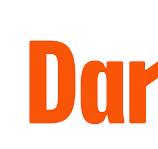The importance of lead segmentation in a business cannot be understated. When running an ad campaign, it is essential to know who your target audience is. This way you can use the right words and catchphrases that will resonate with them. It’s easy to get caught up in what we think everyone wants to hear, but by listening carefully and researching each individual, you’re likely to find their specific interests and preferences for this type of content.
What is Lead segmentation?
Lead segmentation is a process to identify different groups of prospects and customers based on their behaviour with your company. It allows the process of determining how your company can categorise prospects and customers by grouping them into clusters based on various parameters. Lead segments could even be determined through a word search, in which you would type out what words matter to that lead or prospect, then find where each person ranks within those keywords.
Why is Lead segmentation important?
Lead Segmentation, a type of audience segmentation, helps to determine who the effective leads among your audience are. Then, you can pay attention to convert those leads into high engaging customers. You could call it part of an audience segmentation depending on what is most important at any given time. Here, we divide the customer or leads into small groups for better understanding their needs to offer them what they want from us as an organization.
Lead segmentation lets you know what the best type of lead is for your company. Plus, it helps you to convert them into high engaging customers! As you know, to build a $100M ARR SaaS company, you need to know which animals you need to hunt. This is especially true when it comes time for your investors and other stakeholders. If the data isn’t segmented from the start then they may end up underselling themselves.
Likewise, their business decisions will be poor because of an inability to find key insights about specific customer segments instead of looking at aggregates across all customers as one group. Failure to segment our data before presenting it with potential partners (investors) can lead them towards making inferior product development choices based on aggregate numbers rather than actual data. Also, it leads to underselling yourself to investors and poor business decisions. This may be a problem for those of us who are trying to build a $100M ARR SaaS company because we need to know which animals we’re hunting.
How to segment leads a better way?
Segmentation is a tool that can help marketers segment out their contacts based on demographics. It allows for the understanding of who they are marketing to and what might persuade them better than others, to bring about success through personalised communication.
1. Identify your best customers to find the right prospects: Evaluate customer behaviour and identify those who are most likely to buy from you in the future, then focus on them exclusively while providing stellar service that will keep them coming back for more. This way when they do make a purchase it’s because of their loyalty to your business instead of one-time curiosity.
2. Calculate their worthiness by calculating how much profit is made per transaction with these individuals (the Customer Value): Typically people have found a product or brand within an individual category that has changed their life but oftentimes companies lose sight of what makes each person unique which can be detrimental as we strive towards achieving growth goals over time.
Final Say
Segmentation is not just about demographics. You can also segment contacts based on what they’ve done during the marketing process. It doesn’t always have to be determined by some fixed parameter like age or location, either!
Think of your best customer. Think about the type of company they work for, where their office is located and what industry it might be in. Once you have a general idea, head to LinkedIn or Google Maps to find out when this person’s job title typically reports on a weekday morning (or afternoon depending on how late-night these people are). This will give you insight into which campaigns may be most effective at reaching them because those time windows correspond with business hours that cater specifically toward companies just like theirs!
You can also use social media platforms such as Twitter or Facebook if there aren’t any specific times listed by looking up trending topics related to jobs similar to ones from your list above during different hours throughout the day–you’ll see who has been tweeting. Ever wonder what you could do with your customers who are already giving you money? Well, there are four ways to find out. One is to identify the best of them and use that information for targeting new prospects.
This way we’re not wasting time marketing to people who have no chance at converting anyways! Next measure how much each customer is worth by calculating their lifetime value to make better decisions on which prospect has a higher ROI (return on investment). Then increase spend in campaigns targeted towards those core prospects while running more campaigns towards potentials as well.





